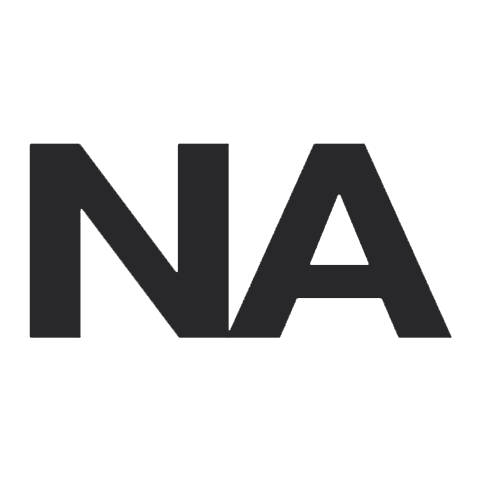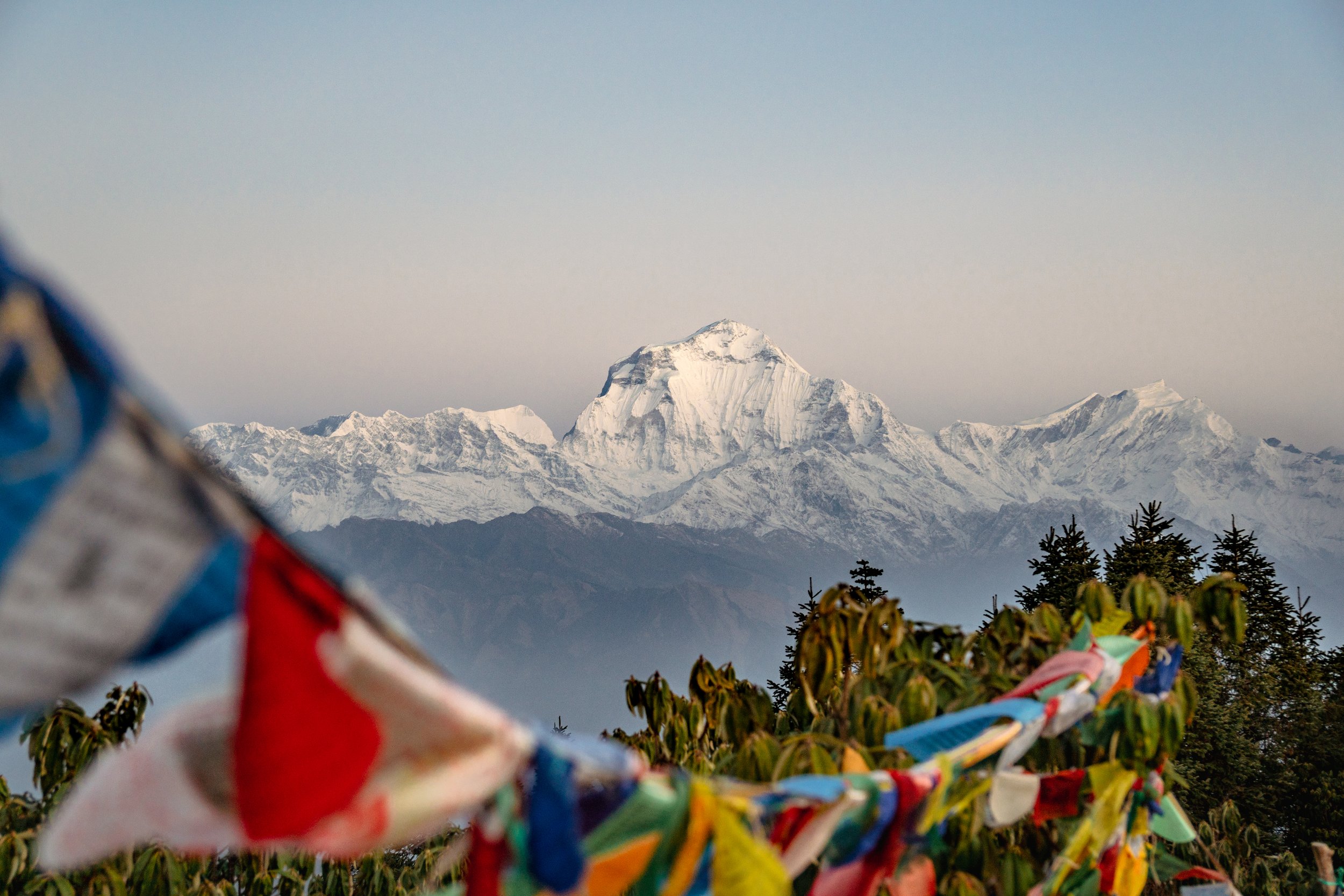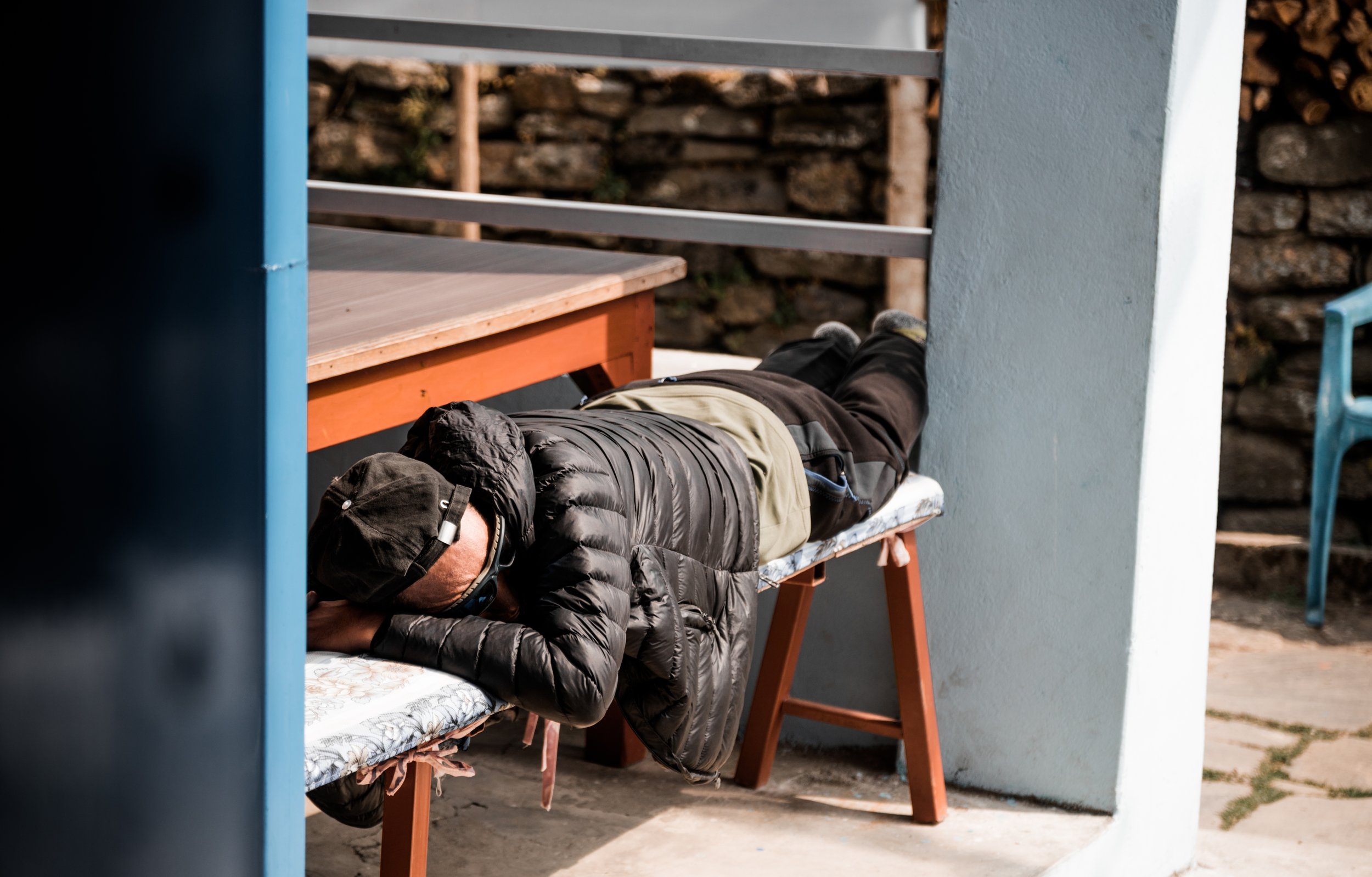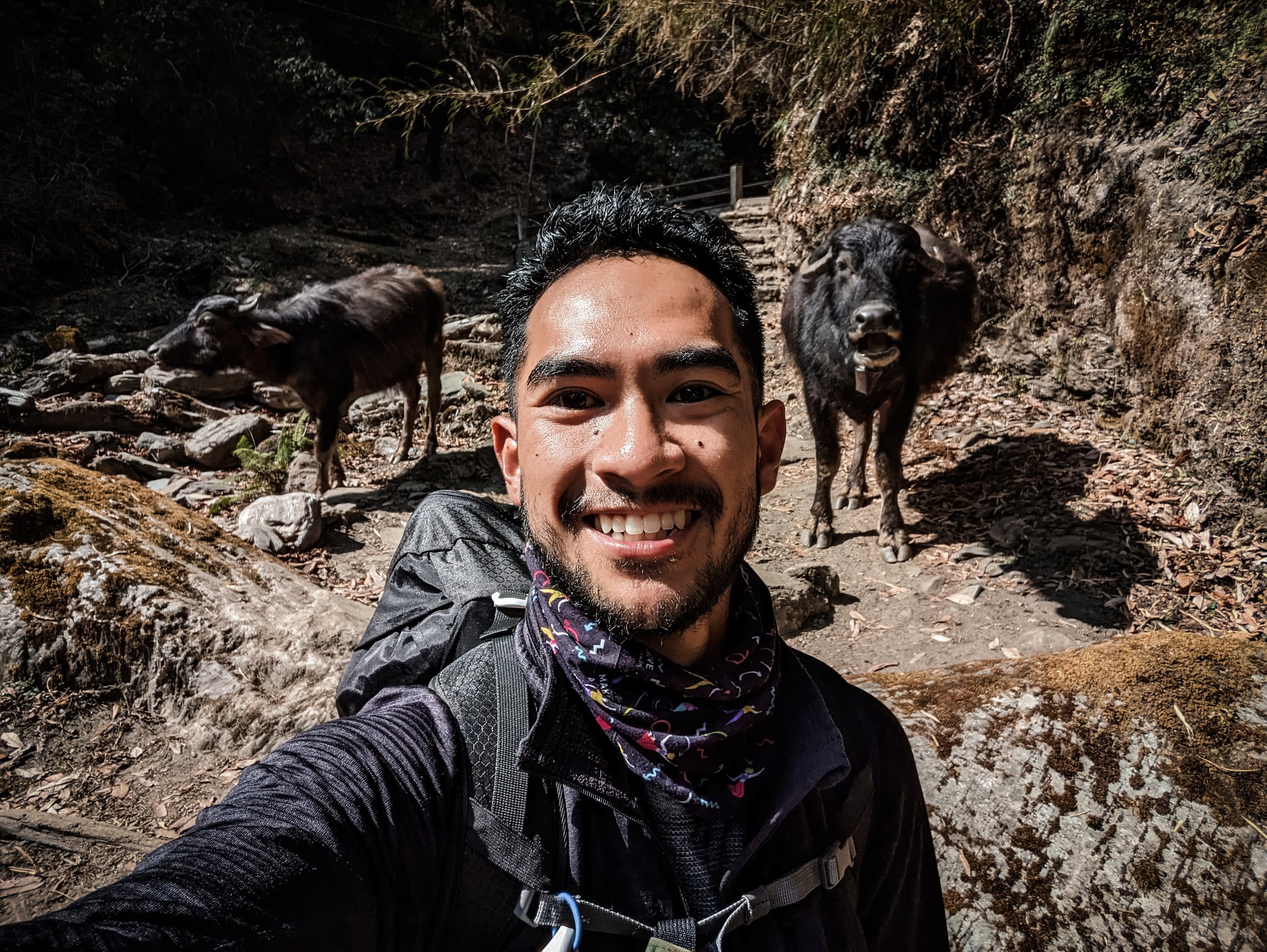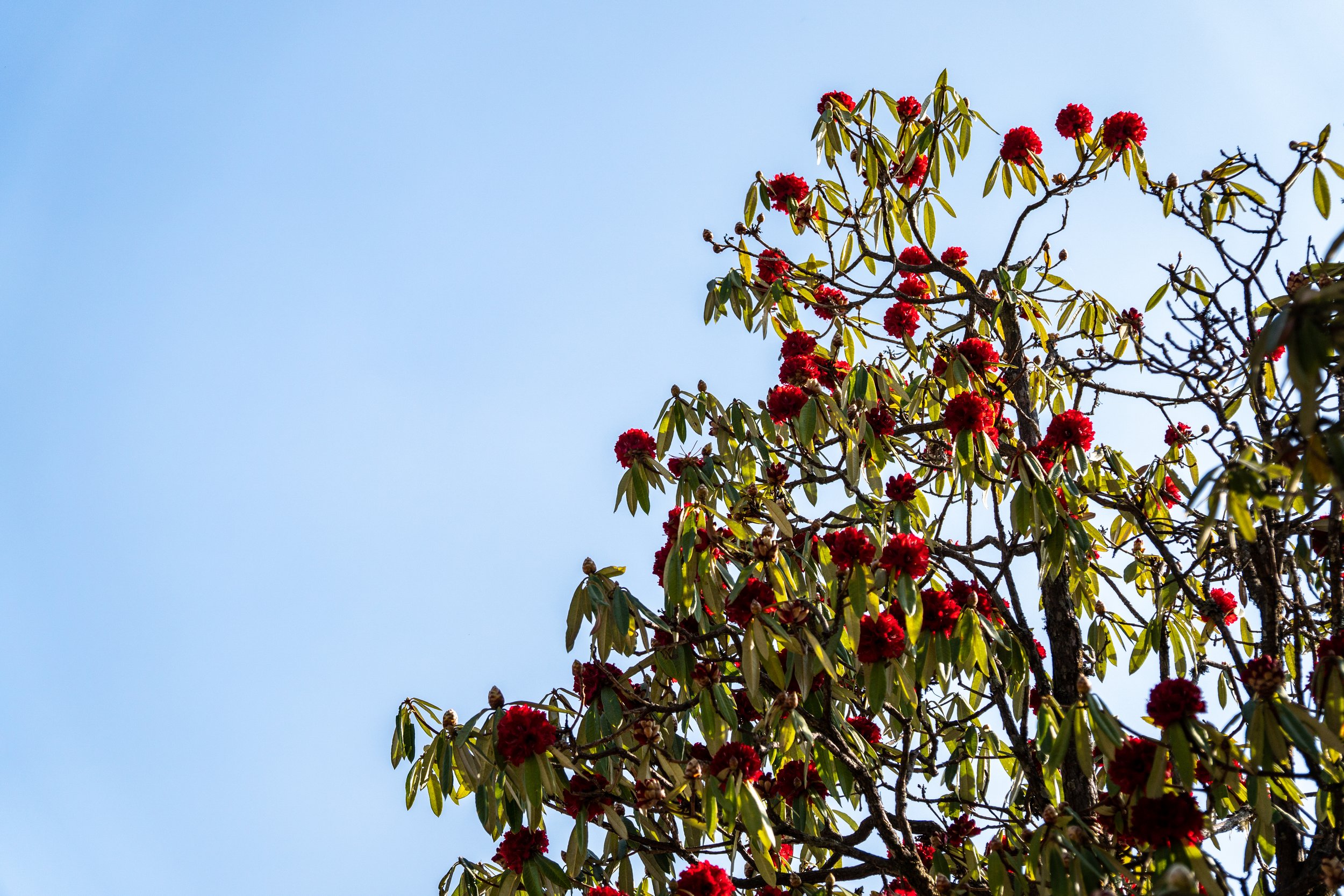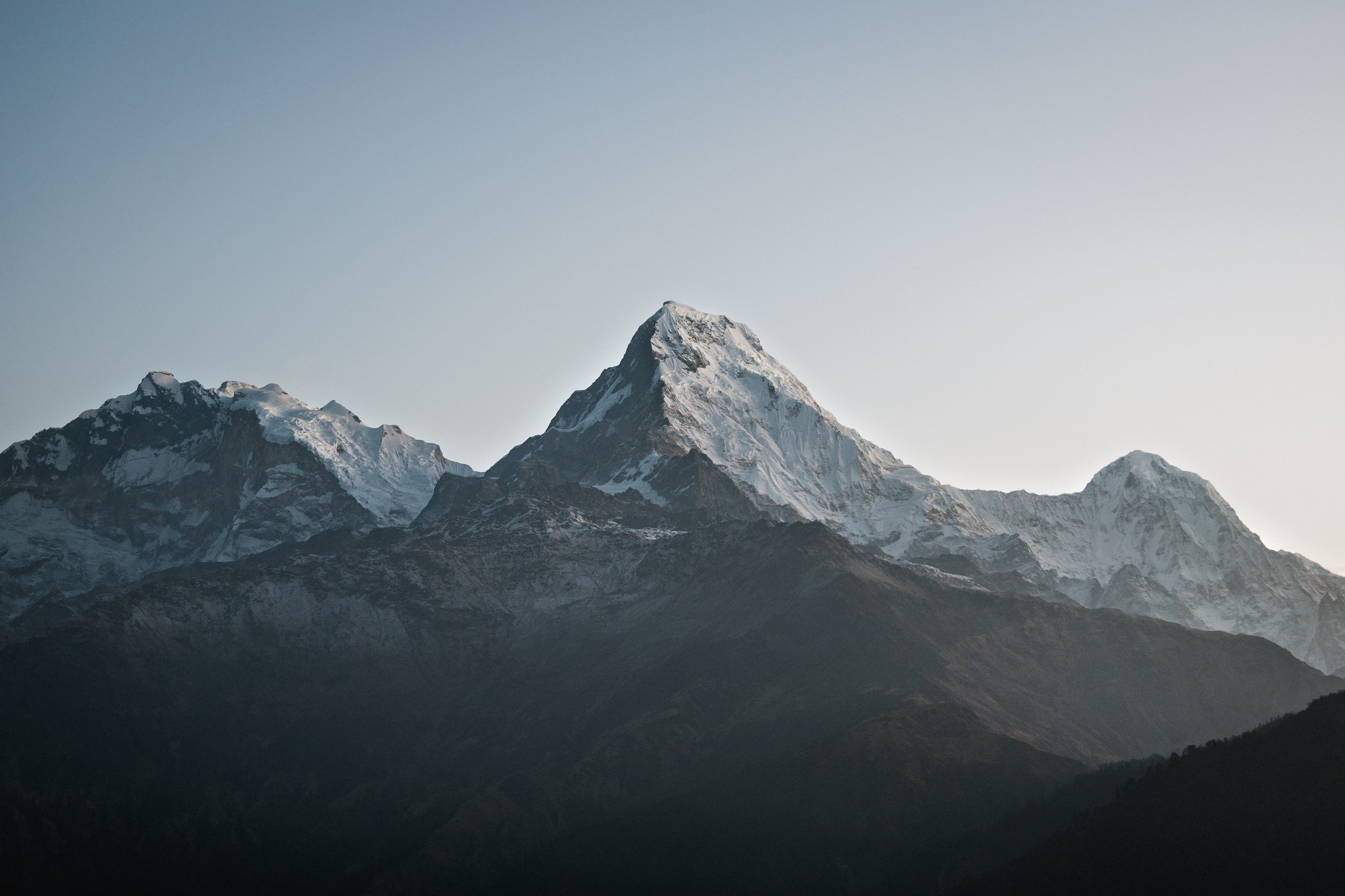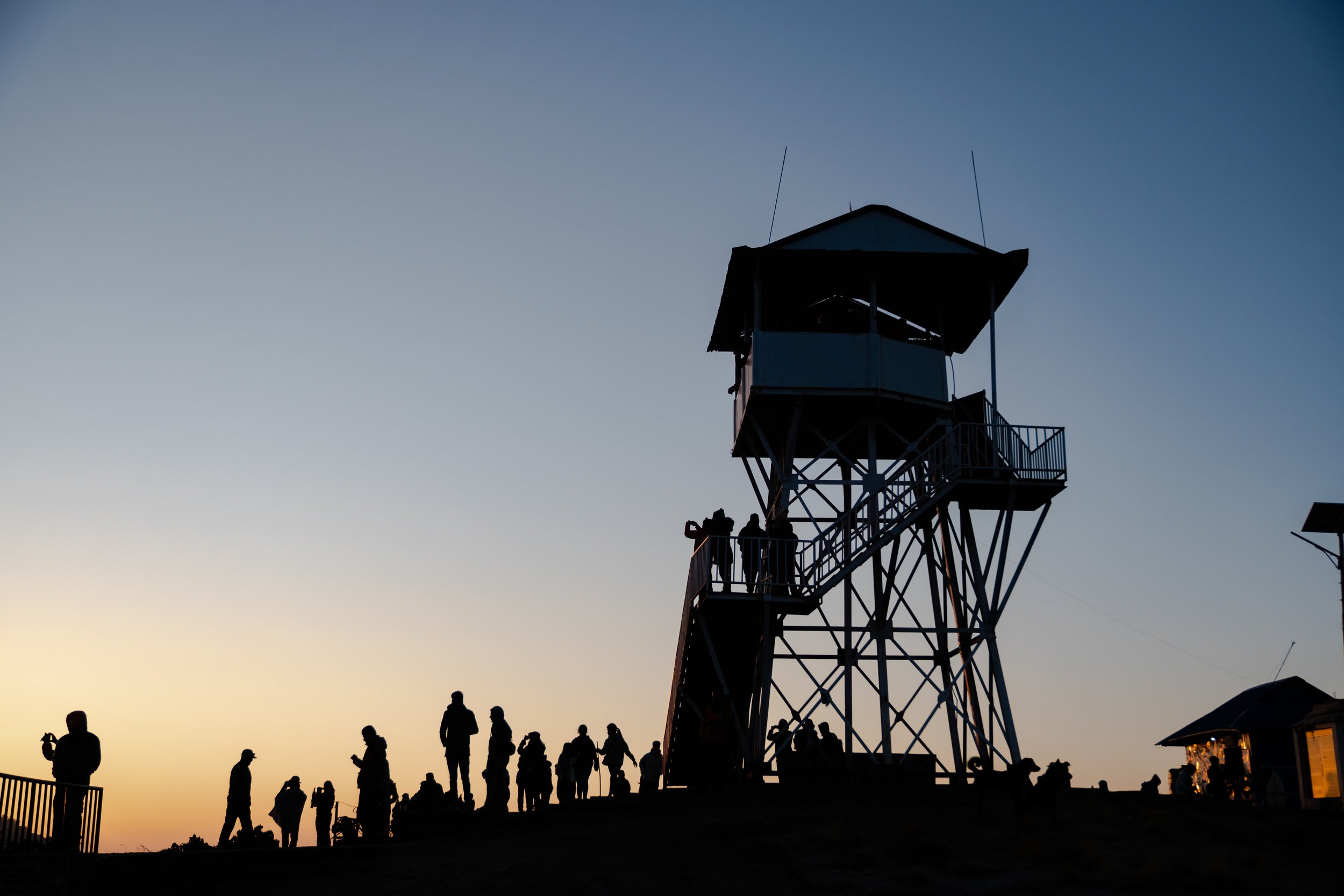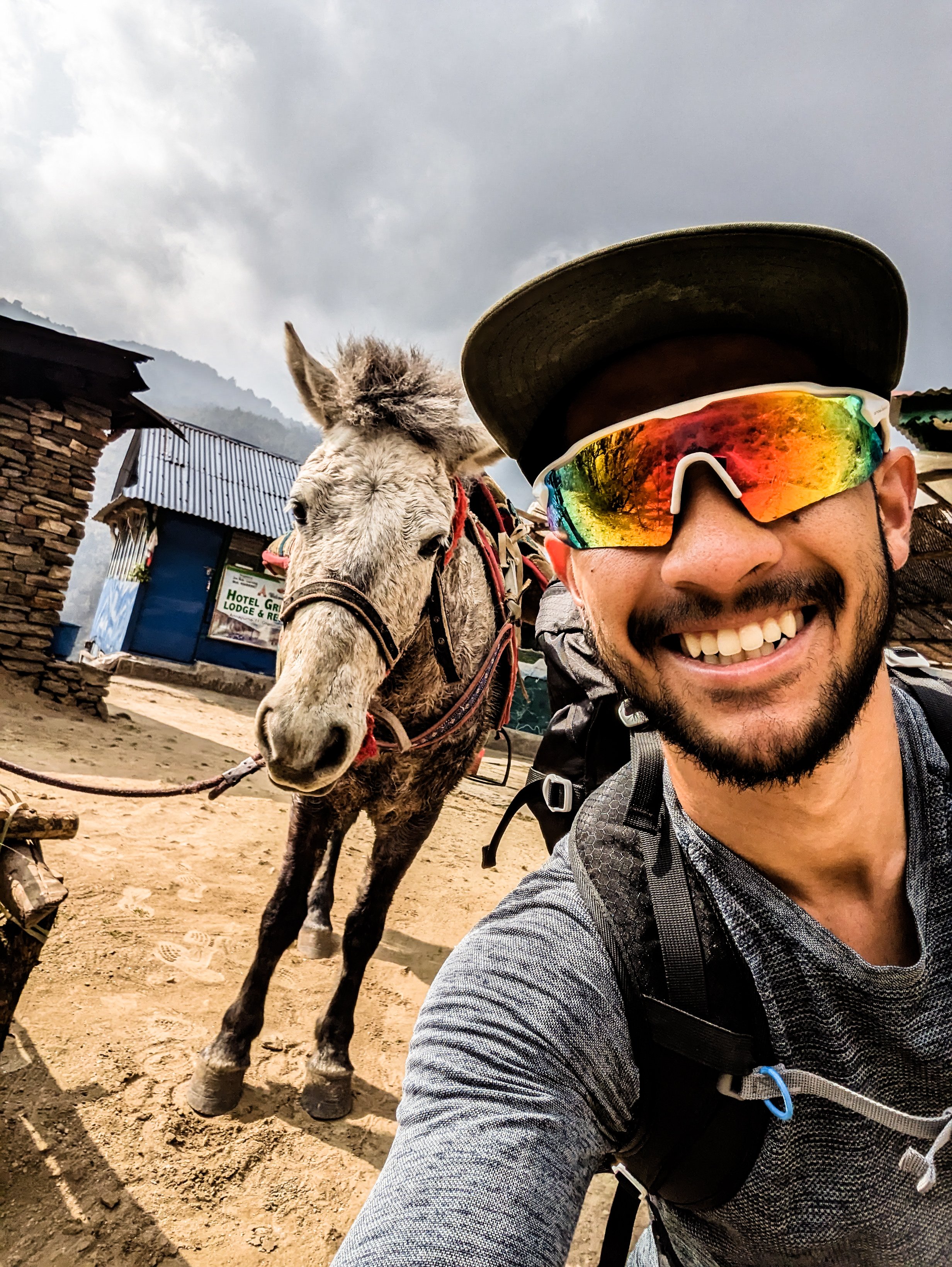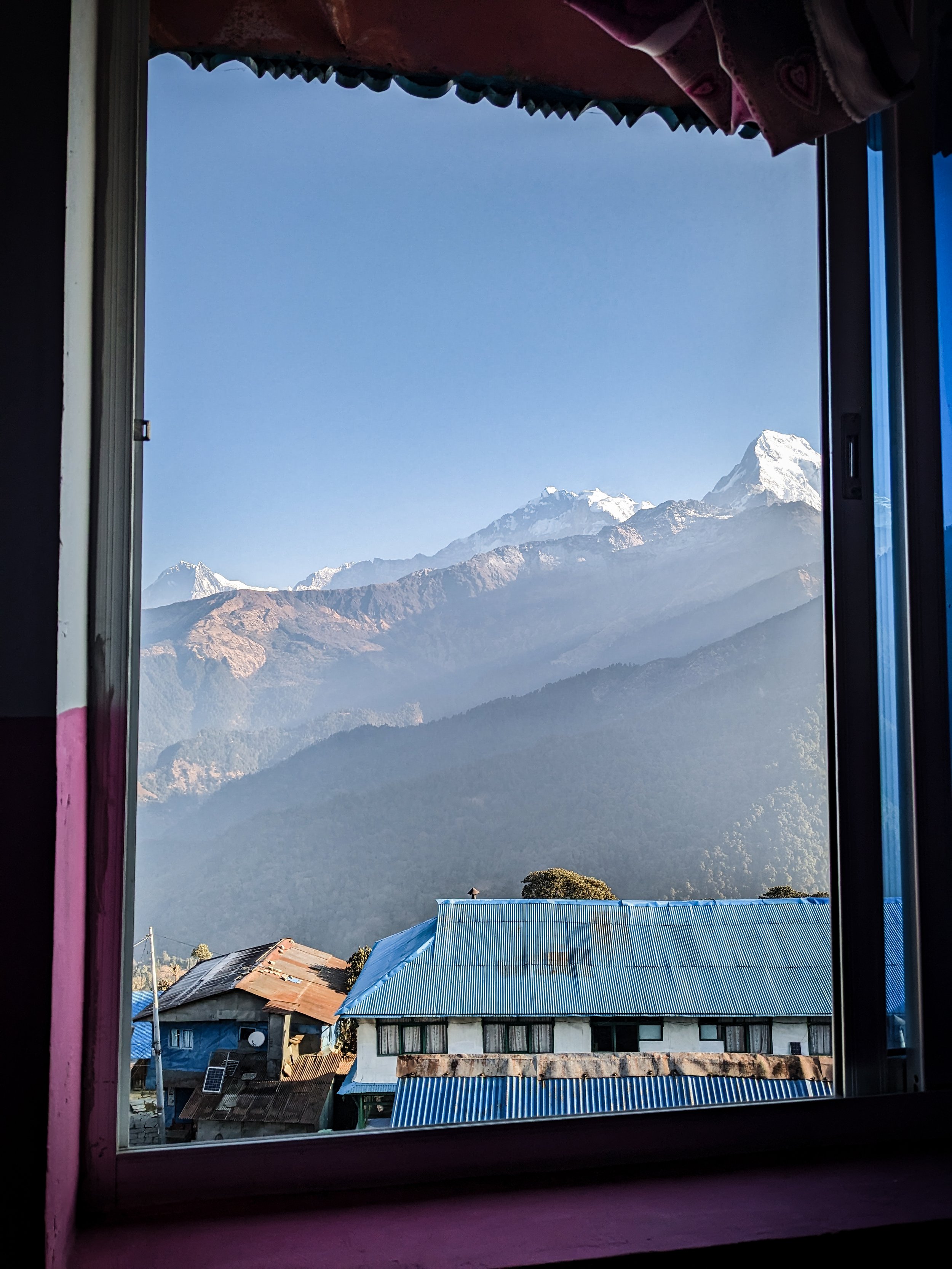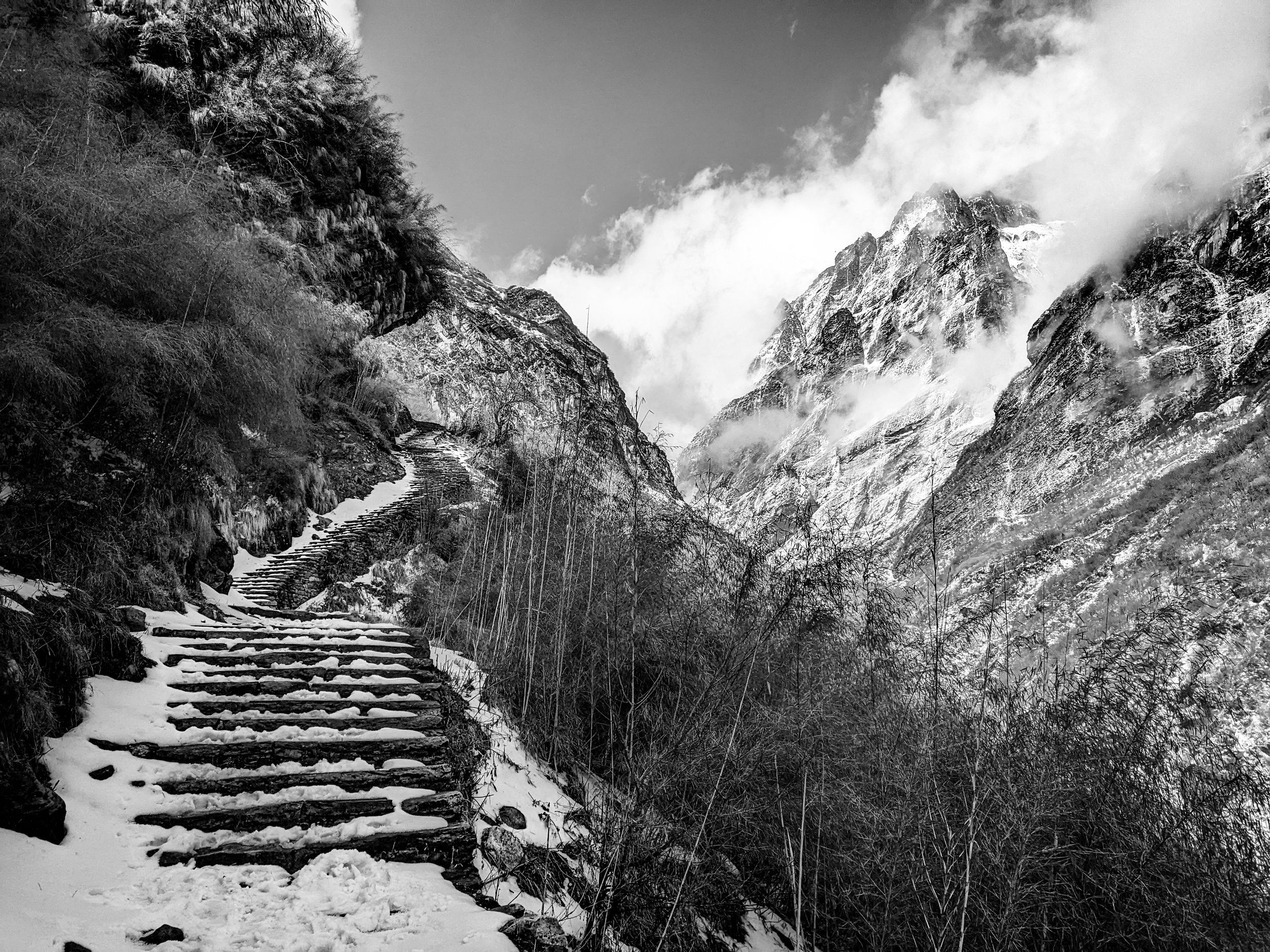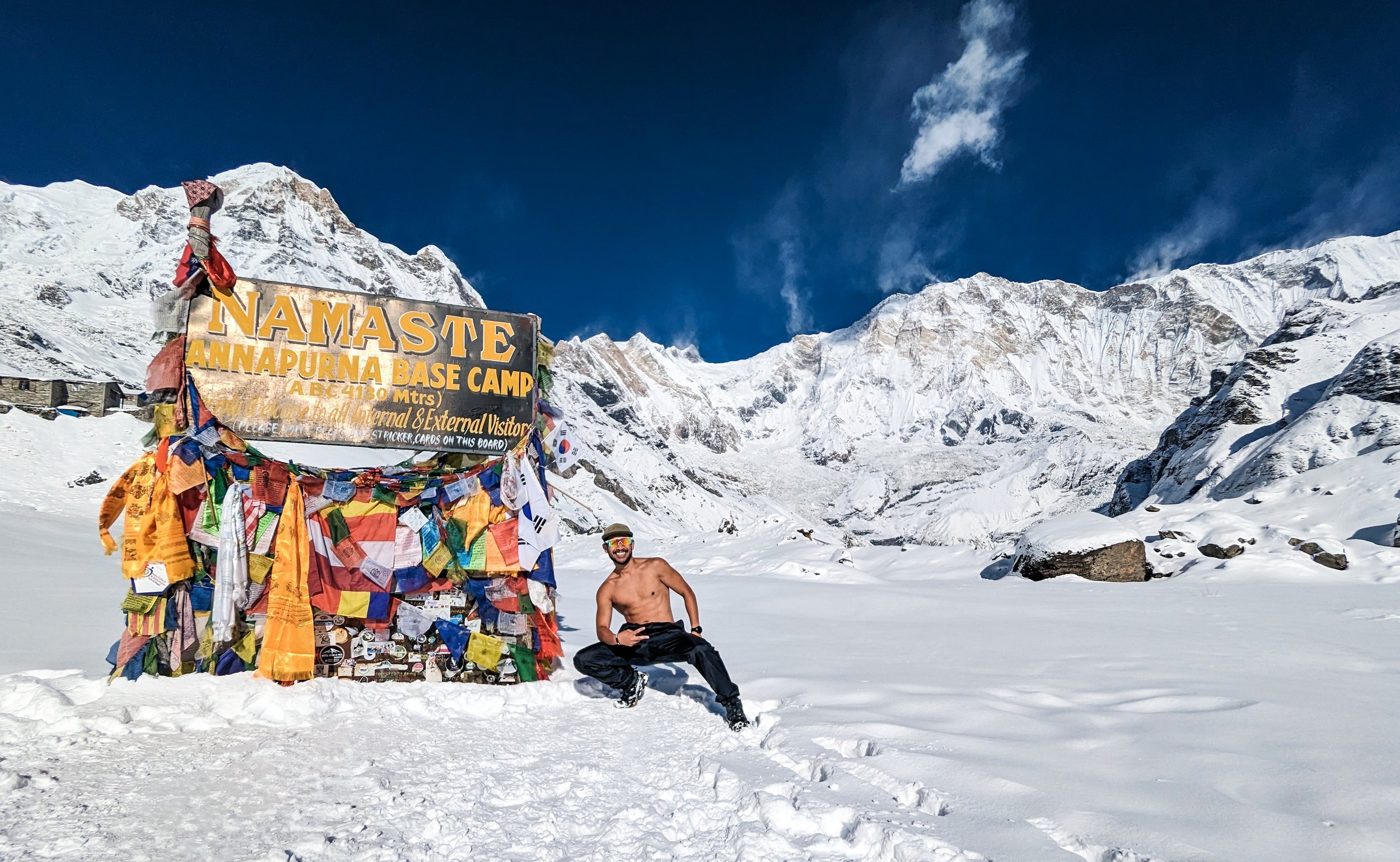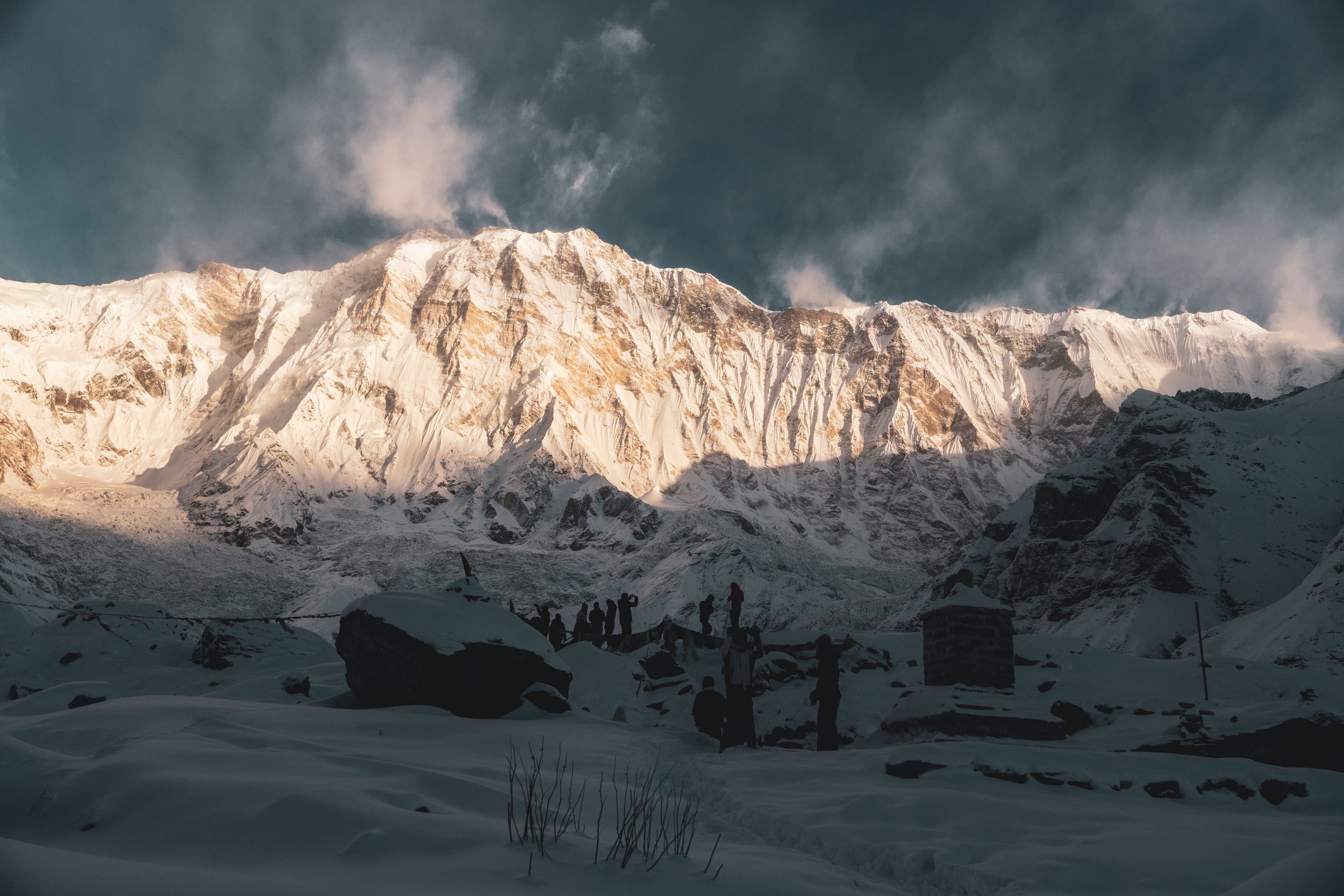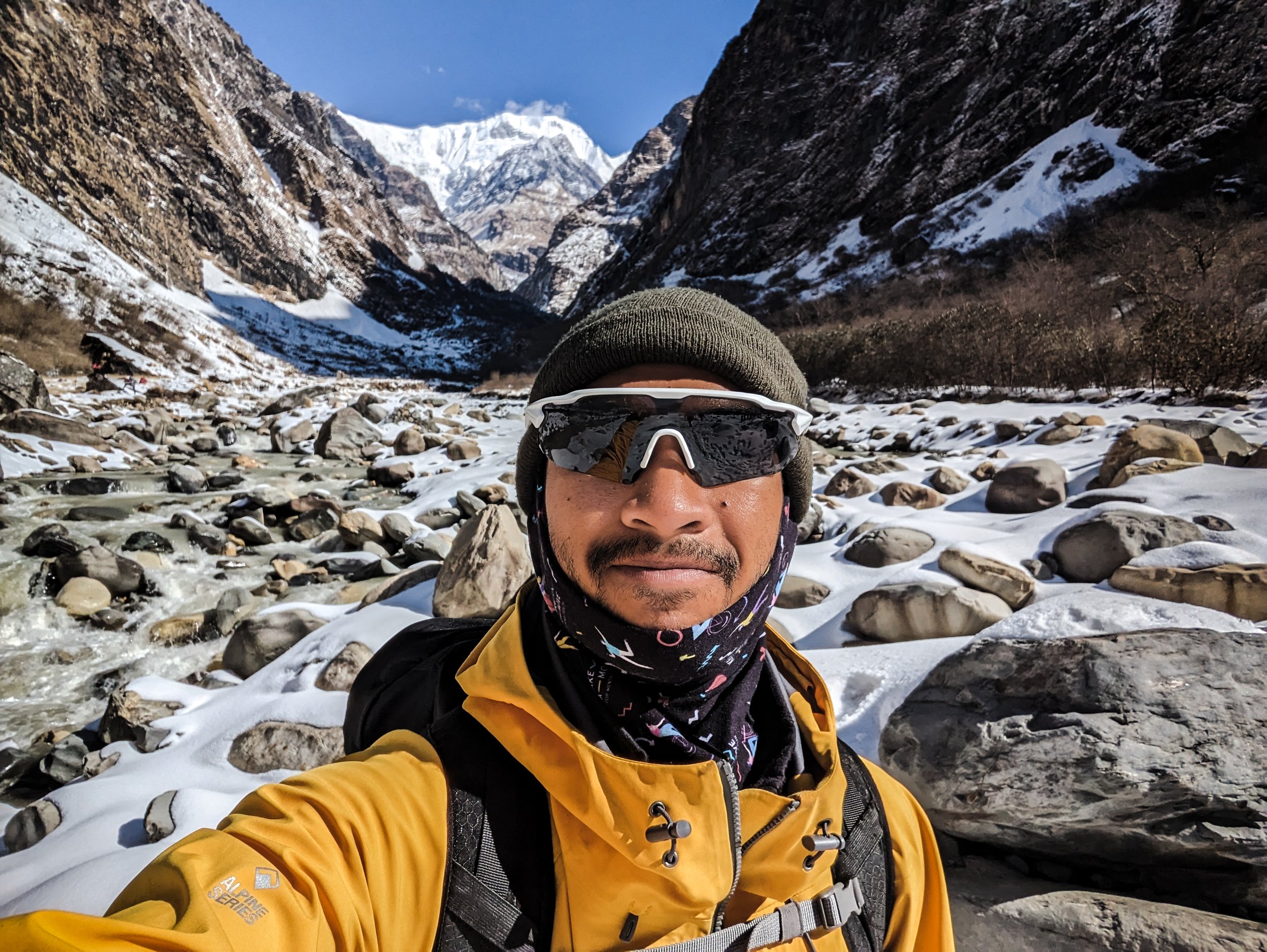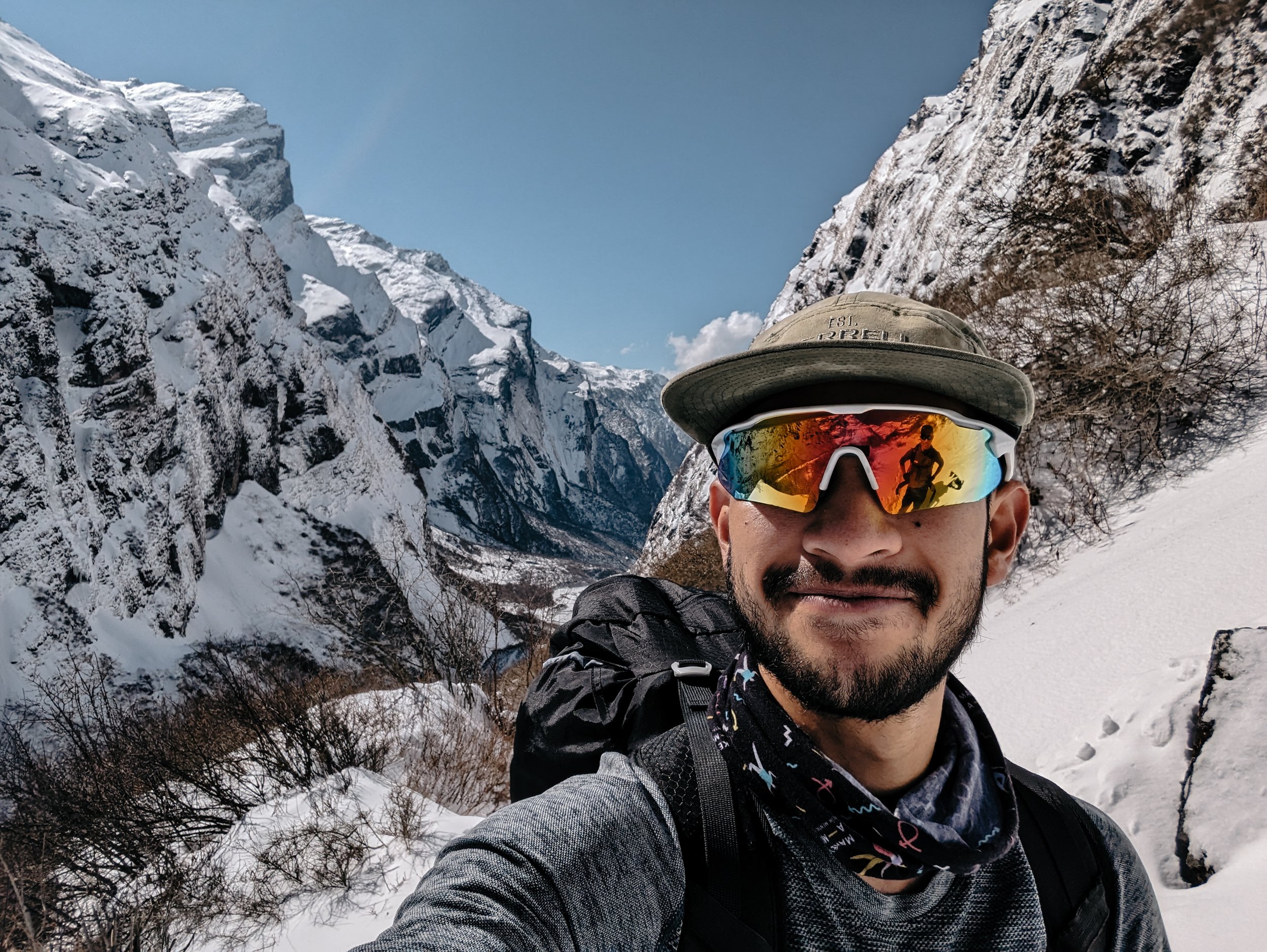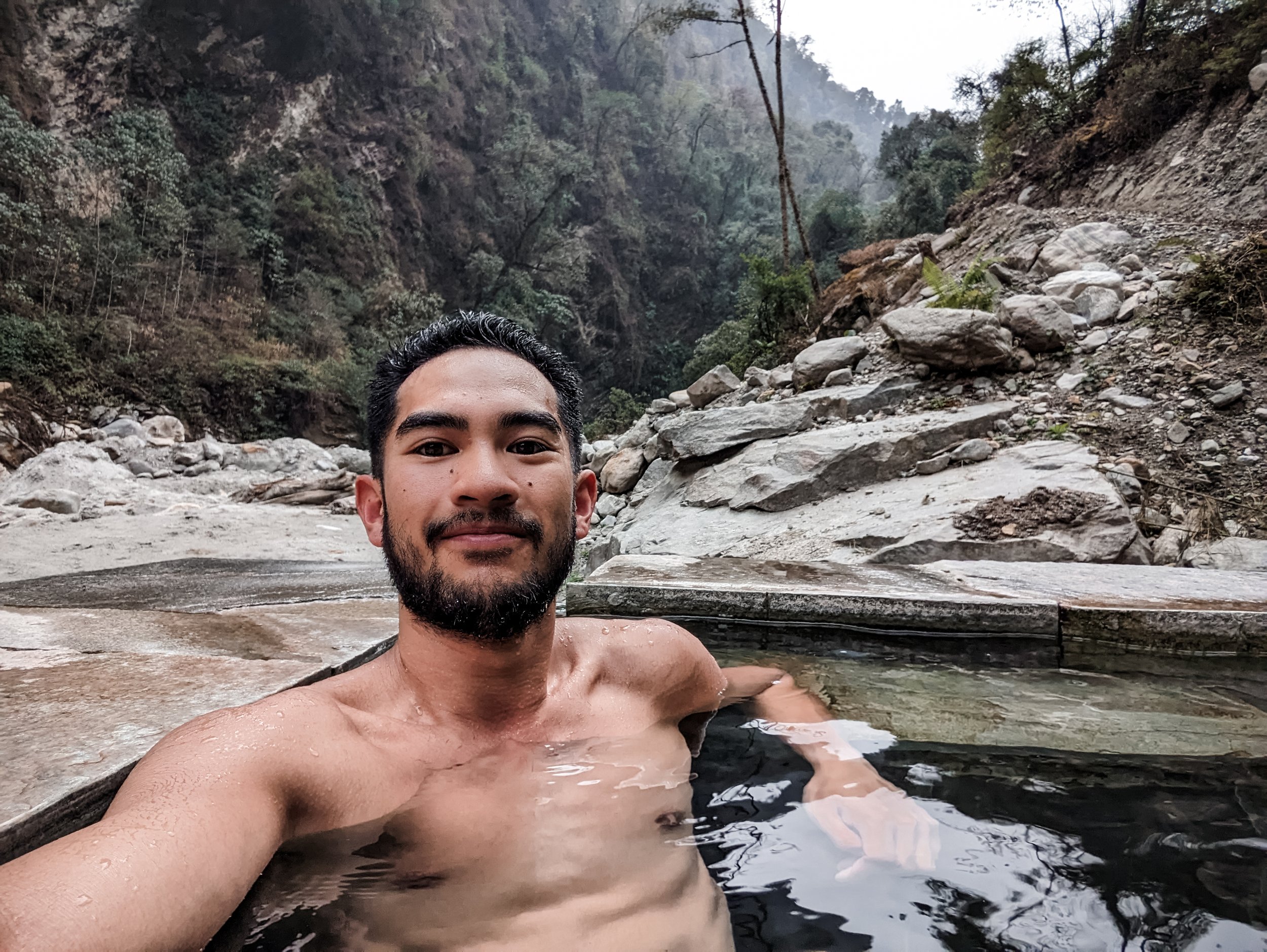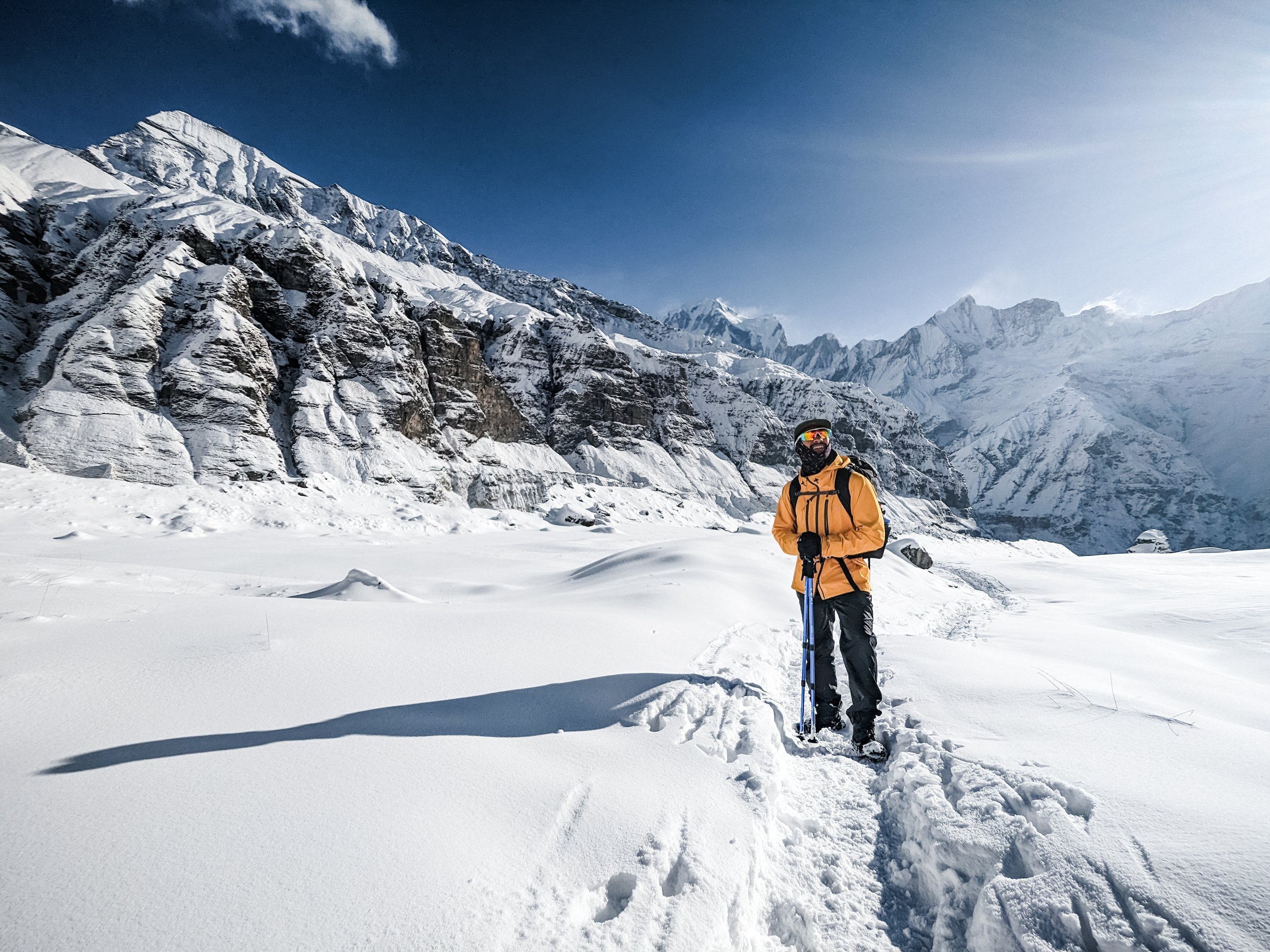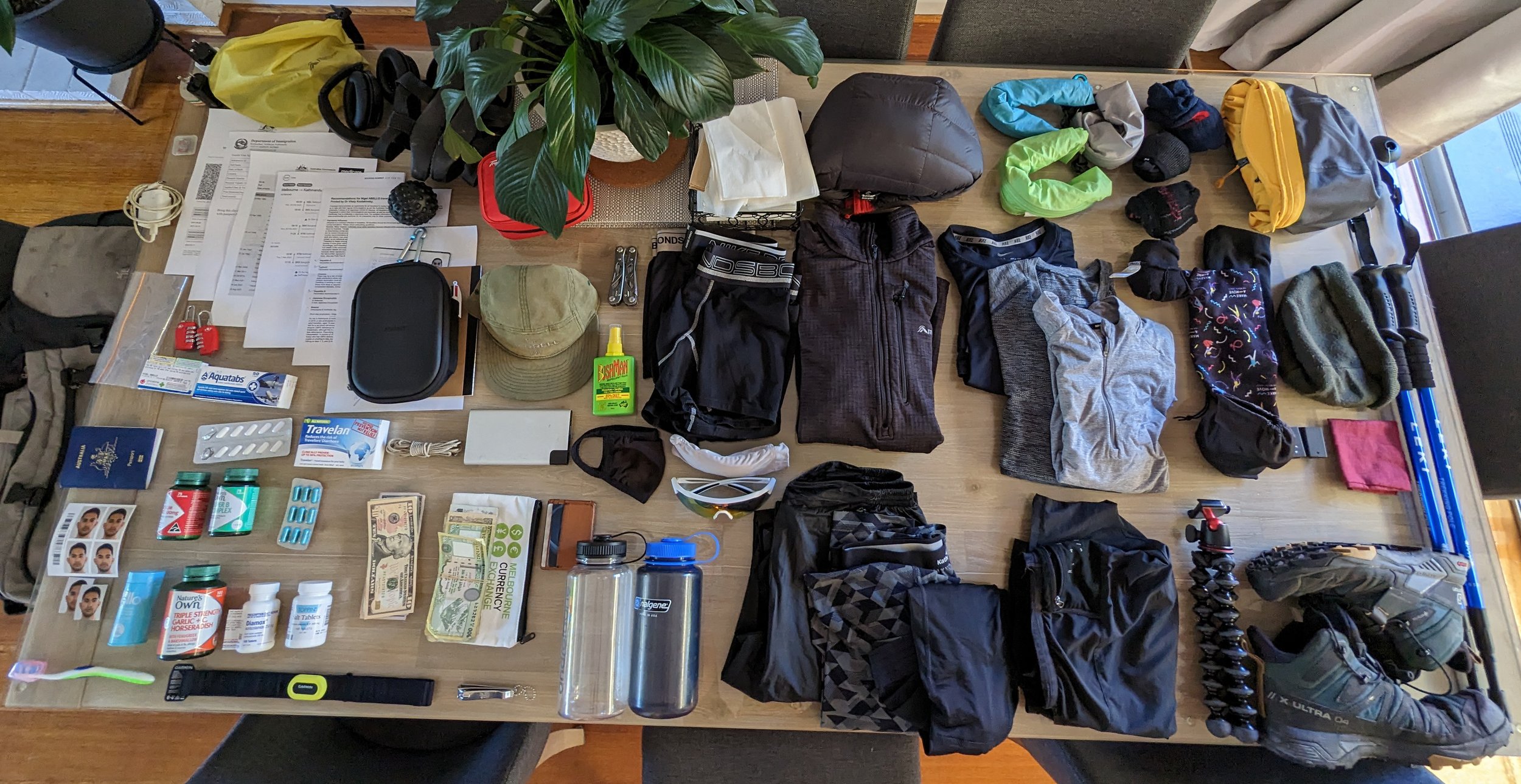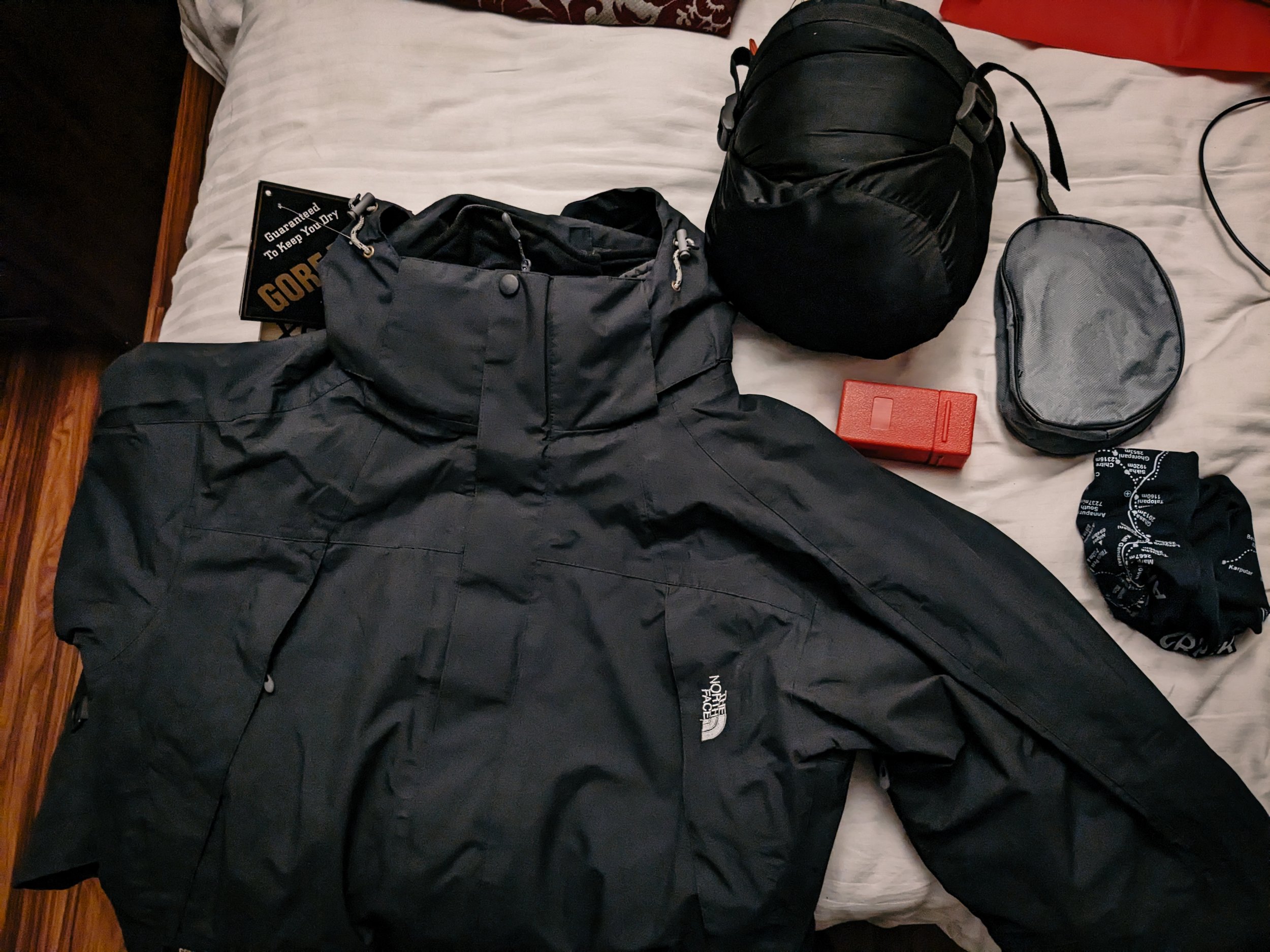The Ultimate Guide to Trekking Annapurna Base Camp, Nepal
In 2023 I travelled to Nepal and decided on trekking to Annapurna Base Camp at 4,130m. This is a complete guide to how to navigate the trek, stay safe, successfully hike to ABC, and enjoy your time in the Himalayas.
Here is all the information to help you plan, travel, and safely explore Nepal.
Note: Some aspects may be outdated as this was a few years back. Please do your own additional research and check relevant sites for updated info.
Summary
11 days
119.1km trekked
8365m of elevation gain
37h 48min of moving time
131 average heart rate
1 creek crossing fallen into
10L+ of lemon ginger honey tea consumed
Countless dal baht, gurung bread, and potatoes
Handful of monkeys
Lots of mules and buffalos
Changing weather from rain, hail, snow, sun, and haze
Numerous friendly faces
Unreal views
Lifelong memories
TREK
A few years prior to experiencing Nepal myself, my brother, Russell, trekked to Everest Base Camp. I remember seeing his photos posted daily, and thinking I wish I could do that myself. Fast forward four years, and I pulled the plug and said to myself why should I go to same place he did? Why not change it up?
So I intended on trekking the Annapurna Circuit. Unfortunately, I was limited with time and decided to hike ABC instead. For me, being in Nepal, and taking the first step to trek was a win in my books.
To complete the ABC Trek the shortest time would be 7 or 8 days. It takes about 6 days from Nayapul via Ghorepani for the Poon Hill trek then to ABC. I asked if we could have an extra day at Pokhara at the start of the trip, and so went straight to ABC afterwards. The alternative was a 12 day trek where a night would be spent at Macchapuchure Base camp (3700m) then head to ABC.
My route:
Day 1: Naya Pul> Ulleri 10.18km 1,063m
Day 2: Ulleri > Ghorepani 8.80km 938m
Day 3: Sunrise at Poon Hill, then Ghorepani > Tadapani 12.50 km 930 m
Day 4: Tadapani > Chhomrong (stopped early because of rain) 9.65 km 578m
Day 5: Chhomrong > Deurali (made up for Day 4) 16.71km 1,694m
Day 6: Deurali > Annapurna Base Camp (4130m) 7.31km 1,014m
Day 7: AnnapurnaBase Camp Sunrise (4130m) > Upper Sinuwa 22.19 km 464m
Day 8: Upper Sinuwa> Jhinu + Jhinu Danda Hot Spring 8.22km 554m
Day 9: Jhinu > Tolka 10.91km 551m
Day 10: Tolka > Australian Camp (wanted to stay here just because of the name. Aussie Aussie Aussie!) 6.37km 517m
Final Day 11: Australian Camp > Phedi 6.23km 60m
If time isn’t a limitation, I would recommend, Nayapul to Ghorepani then do Poon Hill. See if you can add on Tatopani (natural hot spring). Then head back to Ghorepani > ABC. After ABC then head to Jhinu (for the hot spring). Then add the Mardi Himal trek. This would probably be 16~ days trekking.
VISA
Organised online beforehand. Submitted my details then when I arrived in Kathmandu (Tribhuvan International Airport) I went to the visa desk and paid $50USD in cash.
Make sure you have cash on hand as the card terminals are unreliable.
I had a 30 day visa as the 14 days was not long enough for me.
WEATHER / SEASONS
Peak expedition seasons: late March, April, May
Peak trekking seasons: October and November
Winter is through Nov-Jan. Snowy and cold. It is still possible to trek and at that time there will be less people.
I trekked from late February into March. Weather varied from rain in afternoons, sunny days, snow at altitude, and low lying haze in the cities. I found my mood was dictated by the weather.
FOOD & WATER
During peak seasons they will typically only serve dal bhat. Off-peak and shoulder seasons the full menu was available which is what I had. Full menu had dal bhat, pastas, pizza, friend rice, momos, curries etc all with their own Nepali flavour.
Water is available at each village and you can ask them to fill up bottles. There is no problem of water shortage. Some people used a water bladder with a filter. I ended up having two 1L bottles and used Aquatabs. I would fill up a bottle in the morning, add a tablet, and drink from the other bottle which was already purified. I would then swap as the day progressed.
In the cities or close to cities, all food is safe to eat. People gave me a word of warning for meat in isolated villages as you don't know the storage conditions. I chose to play it safe when further out only having veggie dishes.
ACCOMMODATION
Along the trail there are guesthouses. During peak season you would need to get to places early in the day to get a room. During off-peak, didn't really matter what time we arrived. There was always room for us.
If we didn't make it to the intended village, there was always a closer one with a room or so.
Most guest houses had a western style toilet. Only at ABC I had to use a squat toilet. Make sure you bring your own toilet paper and hand sanitizer.
INTERNET
I had a SIM card with Nepal Telecom (Namaste) https://www.ntc.net.np/services/gsm-prepaid-service
There was signal mostly at every village (H+ some times) except for ABC where I was using Wi-Fi.
Essentially every guest house / restaurant had Wi-Fi. Some were free whilst others you have to pay a little bit.
MONEY
Usage of both USD and Nepali Rupee (NPR). USD is mainly used in big cities along with NPR. NPR was pretty much only used on the trek.
It is a cash based society so ensure you carry enough if you expecting to be buying stuff on the way and/or aren't organised through a tour group where they pay for items.
GEAR
If you already have stuff, bring that with you. Otherwise don't buy in Australia beforehand. When you arrive in Kathmandu, go shopping in Thamel. You can bargain and find some decent stuff if you shop around. Buying multiple items gives you the chance to bargain better.
After I completed my trek, I bought a -5'C sleeping bag, 2-layered Gore-Tex jacket for my brother, hiking boot micro spikes, neck buff, and lightweight hiking stove for approximately $135AUD.
Pack Weight
My pack weight when trekking was 13.1kg including a sleeping bag (~1kg). If you include the two 1L water bottles, that is an extra 2kg making the pack weight approximately 15kg.
When flying there I brought extras which I left at a guesthouse that I would return to.
My 45L pack was 6.65kg and my 20L carry on was 5.3kg when flying into Nepal.
MEDICINE
Altitude sickness hits everyone different regardless of fitness.
I went to the GP in Australia and brought Diamox (altitude sickness tablets). I didn't end up using them. I also had anti-malaria tablets which was not needed at all given how cold it was throughout Nepal. I didn't see mosquitoes during my time which I attribute to the months there and the season.
I was taking vitamins everyday as a preventative from getting altitude sickness. I would say it all helped as I didn't get sick my entire trip.
Nature’s Own Triple Strength Garlic + C, Horseradish: immune system and cold symptoms
Nature’s Own Super B Complex: energy levels
Nature’s Own Magnesium Chelate 500mg: muscle spasms, cramps, function and body electrolyte balance.
A friend who went to Nepal got sick (she lost 7kgs) and recommended to buy Travelan. I used it everyday to prevent from any food sickness.
I used sunscreen everyday to be safe as it was fairly sunny during the days.
Guide
Finally, I wouldn’t have enjoyed and got through the whole trek without Pasang Ngima Sherpa.
He is a modern day superhero having summited Everest countless times and completed multiple high-altitude expeditions all around Nepal and Pakistan.
He runs Legend of Himalayan trek and Expedition and I would not have loved the trip as much as I did without his expertise.
If you want to support a local business, definitely contact him for your next trip.
There you go. There’s my guide to trekking to Annapurna Base Camp in Nepal. Let me know in the comments section below if you have questions about gear, the trek, or anything else.
